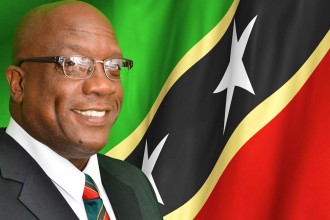RELATIONSHIP: “The way in which two or more people regard and behave toward each other.” Source: Mirriam-Webster
Of all the interpersonal relationships that exist within a modern organization, one of the most important – and complex – is the one between the independent non-executive Chairman of the Board of Directors (“Board Chair”) and the Chief Executive Officer (“CEO”). The quality of this relationship can make or break the success of an enterprise.
Technically and legally speaking, the relationship is a classic “master-servant” one. The Board of Directors hires the CEO thereby making him/her an employee of the enterprise (“the servant”). And the Board Chair is seen as the primary contact and overseer or supervisor of the CEO on behalf of the board. The “master” role.
Ahh, but only if it were this simple. And thank goodness it’s not. That’s because both the Board Chair and the CEO have unique and distinctive roles to play. Yes, the master-servant relationship is always there. But the Board Chair and the CEO also need to see that their relationship is much more than that. They are each the “lead” players for the two teams that co-exist in their organization: the Board and Management. It is this second role which complicates the first.
The Board and Management are jointly responsible for the success of their organization which, in this context, means both the protection of the organization’s assets and the quality of the major decisions that lead to that success. Accordingly, it is the relationship between the Board Chair and the CEO where these two “shared responsibilities” flourish or collide. When everything goes right, and the Board Chair-CEO relationship is a good one, the enterprise benefits immensely. Why? Because two heads are better than one especially when it comes to making high quality decisions.
However, if the relationship is a poor one, the organization will inevitably suffer.
What can go wrong?
Because of the built-in tension and fragility of the Board Chair and CEO relationship, it’s important to understand and recognize the major impediments and causes that can lead to a breakdown in their interactions.
Topping the list is having a Board Chair and/or CEO who does not understand the distinctive governance roles that each is expected to play vis a vis one another. In fact, ‘not knowing what to do’ is the number one cause (among four others) of relationship failures world wide.
There are several tell tale signs to indicate that this ‘not-knowing’ is happening. One is a passive and weak Board Chair who acquiesces to all of the CEO’s recommendations and demands and who prefers status and popularity over results and accountability. The other is a dominant and/or bully Board Chair who routinely oversteps the management role of the CEO and who requires the CEO’s complete servitude. In either instance, the ‘information loss’ to the organization can be catastrophic with the each leader being deprived of the wise counsel of the other, thereby causing mis-informed decisions to be made.
Another major contributor to failure in the Board Chair-CEO relationship is having a ‘governance literate’ Board Chair but one who lacks the skills and experience necessary to carryout his job responsibilities with finesse and aplomb. The job of Board Chair is exceptional in that the Chair is still just an ordinary director with special authority delegated to him/her from the Board. It can be taken away at any time.
To do the job well then, a good Board Chair must have the requisite leadership experience and qualifications to skillfully manage the complex relationships that inevitably exist among the board members and between the Board and the CEO. A ‘must have list’ of personal traits would include: industry knowledge, strong communication skills, empathy, humility and the time necessary to prepare for and run the meetings. When these skills are lacking, it’s a telltale sign that there is a problem within the board in terms of recruiting and selecting its most senior leader.
Getting the relationship right!
After decades of governance consulting, I have found that two components are absolutely essential for the CEO and Chair to succeed in their respective relationship roles. First and foremost, the Board Chair and CEO must value, comprehend and appreciate each other’s jobs. Second, they must formally agree to act cooperatively, both privately and publicly, with one another.
For these two conditions to occur, I have developed four simple ‘rules of engagement’ which both the CEO and Board Chair must follow.
1. Have written job descriptions which clearly specify each others’ roles and which are mutually agreed upon. Unless there are special or mitigating circumstances, the job descriptions should emphasize the Chair’s ‘strategic role’ versus the CEO’s ‘operational role’ as well as any specific areas of overlap. Doing so should aid tremendously in avoiding any interpersonal conflicts. Also, while these two documents should be Board approved, it is important to remember that they are not cast in stone and should be revisited annually to see if any changes are required.
2. Communicate, communicate, communicate. Both individuals need to be completely transparent with each other with no surprises or secrets. The CEO must accept that the Chair will tell the Board everything he or she discloses to the Chair, including notes of their private meetings. The Chair should also keep notes of any in camera board discussions and reveal their contents, without attribution, to the CEO immediately after such meetings have terminated. Each should also graciously and publicly acknowledge the contributions of the other.
3. Accept that there is no such thing as perfect communication. No message is so simple that it cannot be misunderstood. So constantly ask for interpretations and explanations of what each other is saying. Above all, avoid saying: do you understand? Why? Because the one listening will usually say they do…or at least as they understand the meaning of the message in their own mind, but perhaps not as in the mind of the sender. For the really big issues, I prefer the phrase: Do you see what I mean? And when the listener responds in the affirmative, the message sender should immediately reply: So tell me what you see. Tell me how you understand what I meant in terms of what I have just told you.
4. Focus on the outcomes of the relationship. The Board Chair and CEO should seek performance feedback regularly (at least quarterly) from each other. Be blunt and don’t be afraid to say: Did I screw up? Or, how should I have done it differently? If things start to go bad, seek help immediately either from the Governance Committee or an outside executive coach/facilitator. Do not allow anger or hurt feelings to fester and escalate. The relationship will only get worse.
The way forward
In conclusion, the way to build better boards is by having better informed Board Chairs and CEOs interacting in a cooperative and constructive manner. In this regard, creating an effective relationship between the Chair and the CEO requires that both their respective roles be clearly defined and that the rules of their engagement be unequivocally agreed upon. While getting the right governance structure in place to support these two vital roles is critical, in the end, it’s interpersonal behaviours which inevitably determine whether the organization is successful or not.
So here’s the big, uncomfortable question for Caribbean directors, Board Chairs and CEOs: how would you rate the quality of the relationship between your organization’s Board Chair and CEO? If you think that there is room for improvement in the way these two important organizational leaders address their roles, you might want to suggest that they consider going to one of the corporate governance training programs currently available in the region – like the extraordinarily unique 3 day Chartered Director Program (“C. Dir.”) currently being offered exclusively by The Caribbean Governance Training Institute.
Over 500 Caribbean directors have attended this program to date (including all the Governors of the ECCB and the entire Government of Saint Lucia!)
By attending programs like this one, your organization’s stakeholders would then know that their interests are being represented not just by individuals with successful track records in business, but also by men and women who have the governance qualifications - and the certification - necessary for effective board leadership and oversight of their organization’s strategic activities. After all, it’s not education which is expensive, but rather ignorance. ¤
Dr. Chris Bart, FCPA, FCIoD – Chairman, Caribbean Governance Training Institute



